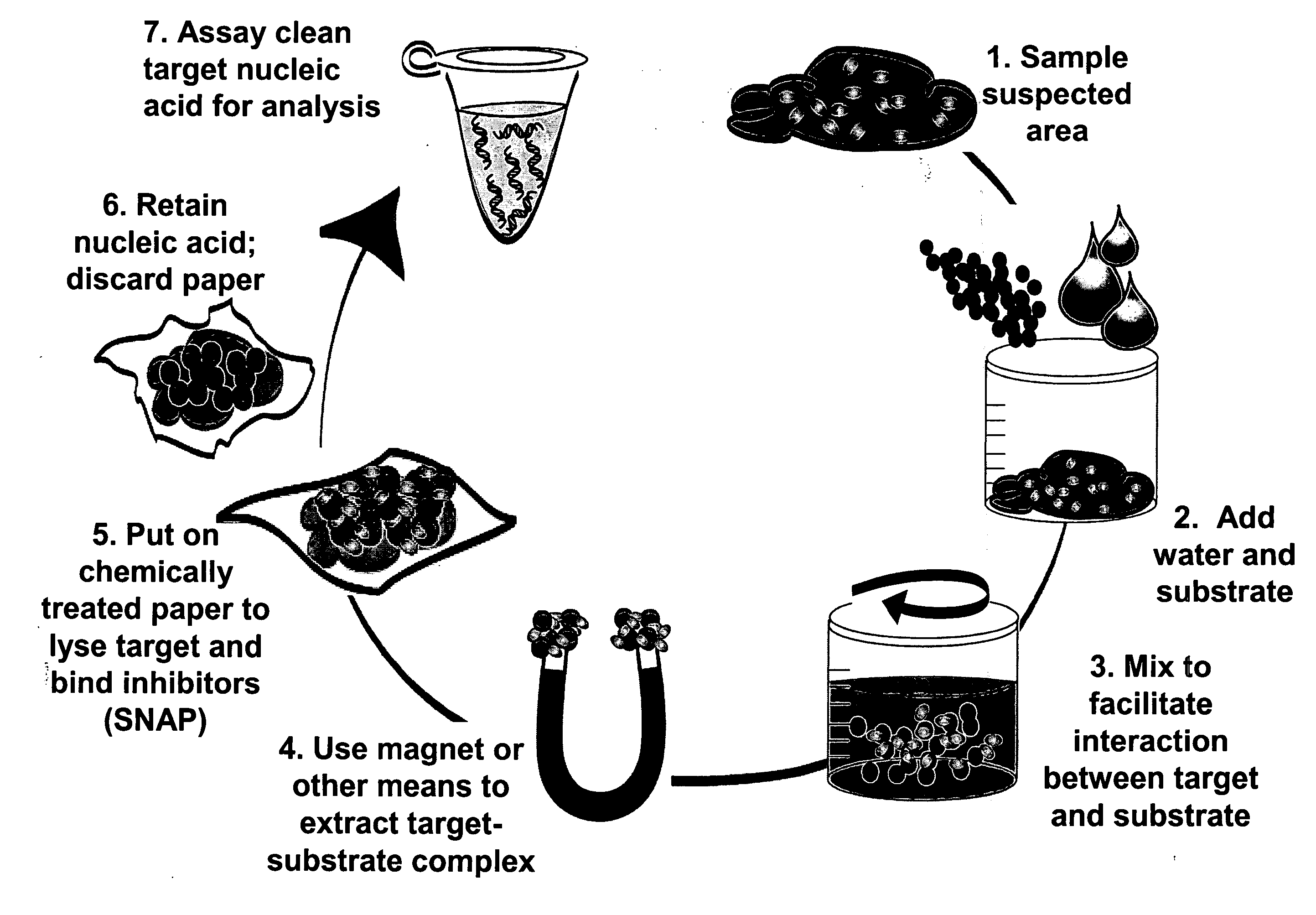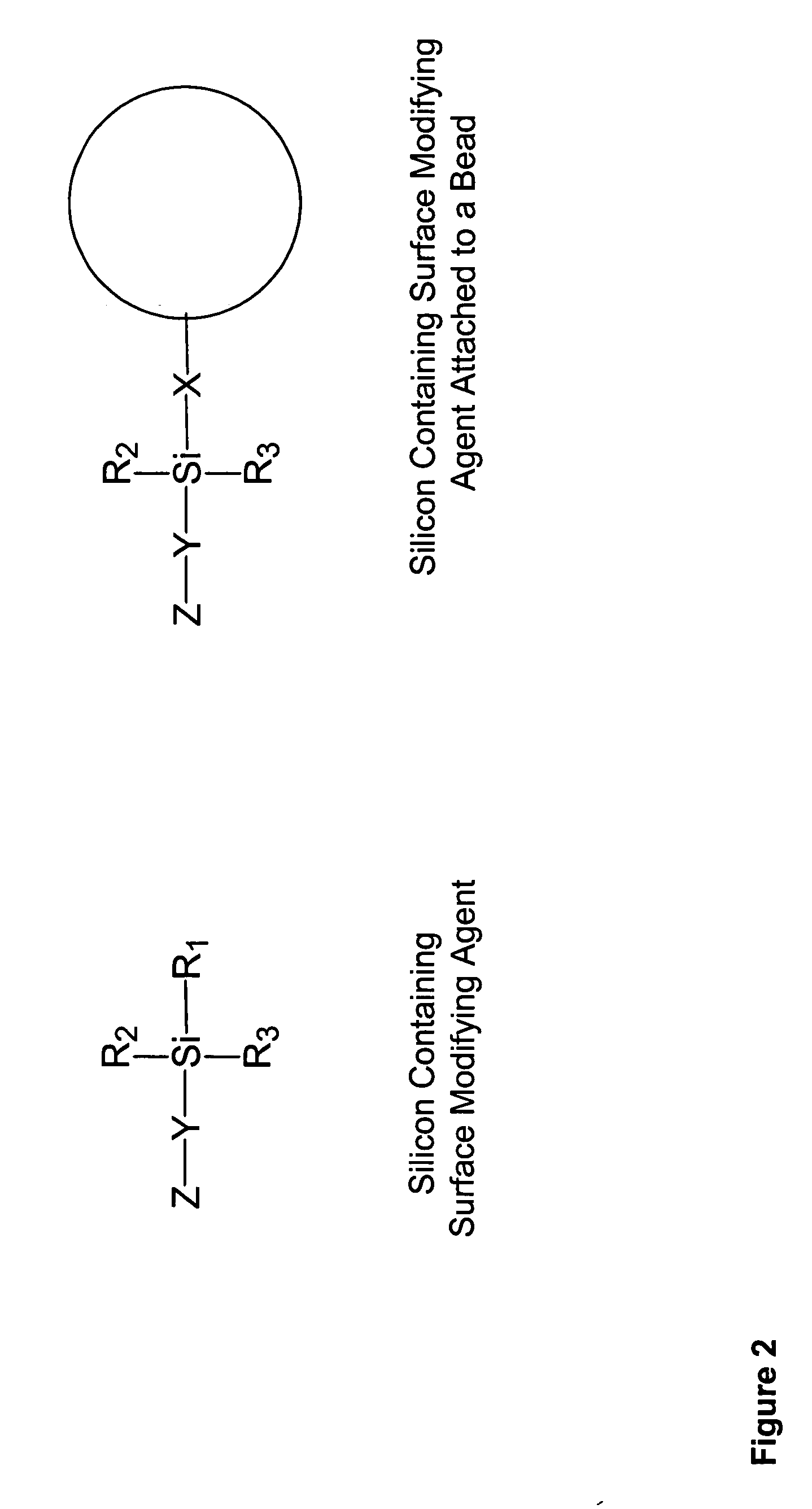Sample preparation methods and devices
a technology of sample preparation and sample, applied in the field of sample preparation methods and devices, can solve the problems of antibody denaturation and degradation, significant limitation of the general applicability and cost effectiveness of previously available technologies, and the need for such extensive information of possible targets, etc., to facilitate further analysis and identification of targets.
- Summary
- Abstract
- Description
- Claims
- Application Information
AI Technical Summary
Benefits of technology
Problems solved by technology
Method used
Image
Examples
example 1
Application of the Affinity Protocol
[0301] As outlined in detail above, the Affinity Protocol provides an improved method for identifying targets in a sample. The protocol can be used either alone or in combination with SNAP / MITLL methodology, can be used to identify a wide range of targets from a diverse array of samples, and can be used with a variety of substrates. One substrate that can be useful for identifying particular targets is commercially available magnetic beads. Such beads are available from a number of manufacturers, come in a range of sizes and shapes, and are composed of any of a number of materials. Each of these factors can be optimized based upon the particular target, sample, and other factors.
[0302] The following methodologies briefly summarize methods employed to use commercially available magnetic beads as a substrate in the Affinity Protocol. Commercially available magnetic beads are shipped in a buffer. Prior to use, the beads were washed as follows: plac...
example 2
Preliminary Analysis of Surface Modifying Agents—Analysis of Commercially Available Substrates
[0306] We conducted an initial screening of 19 commercially available magnetic beads of varied coatings and sizes (Table 1) to ascertain their usefulness in the Affinity Protocol. The goal was to determine which commercially available beads provided the best overall efficiency in increasing signal (decreasing cycle number using PCR) in comparison to that achieved by the use of the SNAP / MITLL protocol alone. The identification of the characteristics of commercially available substrates and coatings that provide increased efficiency in the separation and identification of nucleic acid from various samples can be used to develop a rationale strategy for designing additional substrates and coatings. In these experiments using commercially available beads, the efficacy of each bead was assessed in comparison to the analysis of target with SNAP / MITLL alone. Binding efficiency of each bead was ev...
example 3
Preparation of Amine-Containing Surface Modifying Agents
[0312] Following our analysis of commercially available beads (e.g., substrates) containing various commercially available coatings, we prepared a variety of novel coated substrates to assess the usefulness of these coated substrates in the Affinity Protocol. Specifically, we focused on amine containing surface modifying agents, however, similar experiments can be readily performed using other classes of surface modifying agents. As detailed herein, we prepared a number of surface modifying agents and used these agents to modify substrates of various sizes, shapes, and materials.
[0313] A. Preparation of 50-Micrometer Surface Modified Silica Gel
[0314] A slurry was prepared from 2.0 grams of 50-μm particle size silica gel purchased from Waters Corporation (YMC-gel silica) and 20 ml of isopropyl alcohol. To the slurry was added 10 mmole of the surface modifying agent. The slurry was gently stirred for 16 hours and then filtered...
PUM
| Property | Measurement | Unit |
|---|---|---|
| Mass | aaaaa | aaaaa |
| Mass | aaaaa | aaaaa |
| Mass | aaaaa | aaaaa |
Abstract
Description
Claims
Application Information
 Login to View More
Login to View More - R&D
- Intellectual Property
- Life Sciences
- Materials
- Tech Scout
- Unparalleled Data Quality
- Higher Quality Content
- 60% Fewer Hallucinations
Browse by: Latest US Patents, China's latest patents, Technical Efficacy Thesaurus, Application Domain, Technology Topic, Popular Technical Reports.
© 2025 PatSnap. All rights reserved.Legal|Privacy policy|Modern Slavery Act Transparency Statement|Sitemap|About US| Contact US: help@patsnap.com



